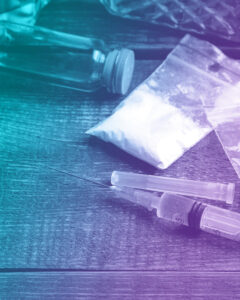How Much Fentanyl Does It Take to Overdose
You knew the rumors, heard all the news stories, and kept up with the latest statistics about fentanyl on campus. Still, you wanted to have the college experience like you saw in the movies, and when you visited your brother on his college campus. Life seemed so fun, and as a freshly turned 19-year-old, you didn’t want to miss out.

Despite the looming ads warning of fentanyl, you went to countless parties and delved into different types of substance use. Alcohol, pain pills, and a couple of lines of cocaine here and there highlighted your party experiences. School always came first, but the sorority life and spending time at fraternity parties really helped you feel alive.
Until one night, you and your friends were at a new fraternity, one not well-known on campus. There was the usual punch bowl full of pills, and you saw people you didn’t recognize adding more to fill it up. Despite not knowing these people, you knew what pain pills looked like and were confident in finding them in the bowl. The next thing you knew, you came to and you saw your friends, two were awake and crying while one lay on the grass, lifeless. What happened? Your mind was flooded with thoughts of the fentanyl warnings, and you shook your head, praying it didn’t happen here.
Between January and June of 2022, over 250 deaths were caused by fentanyl in Hillsborough County. At Clean Recovery Centers, we have been keeping up with the rise in fentanyl-related overdoses, and provide a safe space to heal from substance use disorders. Our unique, three-phase approach to treatment addresses all aspects of addiction – physical, mental, spiritual, and social. Today, we are answering the common questions surrounding fentanyl, “Why is fentanyl so dangerous?” and “How much fentanyl does it take to overdose?”
Why Is Fentanyl So Dangerous?
Illicit fentanyl is a form of synthetic opioid, meaning it is man-made. Natural opioids – such as morphine – are derived from the opium poppy plant. Opioids such as fentanyl and heroin go through further processing to make them more potent. Fentanyl is one of the most potent illicit opioids on the market, being 50 times more potent than heroin and 100 times more potent than morphine. Combined with the fact that fentanyl is odorless, colorless, and tasteless, it is easily added to other substances without knowledge, adding to the danger factor.
Fentanyl Overdose – How Does It Happen?
 Anytime the body experiences an overdose, it is overwhelmed with the amount of the substance. This can happen with alcohol, stimulants, and even common multivitamin ingredients such as iron or vitamin C. Fentanyl is no different, but due to its potency, it takes a lot less fentanyl to cause harm than other substances. There are different scenarios that can lead to a fentanyl overdose, but the effects on the body will be similar.
Anytime the body experiences an overdose, it is overwhelmed with the amount of the substance. This can happen with alcohol, stimulants, and even common multivitamin ingredients such as iron or vitamin C. Fentanyl is no different, but due to its potency, it takes a lot less fentanyl to cause harm than other substances. There are different scenarios that can lead to a fentanyl overdose, but the effects on the body will be similar.
Many do not know they have ingested fentanyl. As we mentioned above, fentanyl has no color, taste, or smell, and tends to look like a white powder or clear liquid. This allows dealers to add fentanyl to other substances without the person who is buying it knowing. Dealers add fentanyl to other substances because it is cheap and can increase the desired effects of the substance. However, this can lead to an overdose before the person realizes it. When fentanyl is mixed with heroin, the chances of an overdose increase exponentially as both substances are opioids. On the other hand, if fentanyl is mixed with a stimulant such as cocaine, the effects will seem to cancel each other out. This leads to the person taking more of the stimulant while simultaneously ingesting harmful amounts of fentanyl. An overdose is highly likely in this instance as well.
Those who knowingly take fentanyl are also still at risk for an overdose. Even being careful and monitoring the dose you are taking, an overdose can still happen. Dealers use substances to cut their products to extend their profit and increase the effects of the substance. Xylazine is a common animal tranquilizer that has been recently seen mixed with fentanyl. This is especially dangerous as xylazine and fentanyl both depress the respiratory system, causing breathing to slow and even stop. While Narcan can reverse the effects of an opioid overdose like fentanyl, it does not work to reverse the effects of xylazine.
Common Substances Laced With Fentanyl
There is no substance off limits to potentially be laced with fentanyl. Heroin, cocaine, and methamphetamines have all been seen to have fentanyl present. Even fentanyl-laced weed has been reported here in Florida. However, some of the most common substances laced with fentanyl are pills. Dealers can press fentanyl powder into pills such as Xanax or ecstasy without leaving a trace behind. Rainbow fentanyl has been one of the biggest trends in the country, where pills are colored yellow, blue, pink, green, and purple to resemble candy. The goal for dealers is to get adolescents and teens to begin trying substances for future business. The pills can mimic the appearance of oxycodone or benzodiazepines, but contain only fentanyl and other additives.
Factors That Affect the Lethal Levels of a Fentanyl Dose
While certain substances such as alcohol are affected by factors including body composition, length of use, and more, fentanyl does not definitively play by these rules. According to the Drug Enforcement Administration (DEA), as little as 2 milligrams of fentanyl can be lethal, and most rainbow fentanyl pills contain 5 milligrams. One study hypothesized a relation between higher body fat percentages leading to a higher concentration of fentanyl in the system, but there was not enough data to be conclusive. Therefore, fentanyl can be lethal no matter body size, gender, and even opioid tolerance.
Signs of a Fentanyl Overdose
There are many signs of a fentanyl overdose, including:
- Small, pinpoint pupils
- Blue tint to the lips and fingernails
- Choking or gurgling noises
- Loss of consciousness
- Limpness of the body
- Clammy skin
These signs indicate a medical emergency. If you suspect someone is experiencing a fentanyl overdose, seek help immediately.
How to Help in the Event of a Fentanyl Overdose
The first step in the event of a fentanyl overdose is to call for help. Stay with the person as you wait for help to arrive. Keep them upright or lay them on their side if they lose consciousness. If available, administer Narcan to counteract the effects of the fentanyl. Narcan does not harm the person if they are not experiencing an overdose, so it is best to administer it as soon as possible regardless. Once help arrives, be honest with all substances taken, or do your best to describe the symptoms they experienced if it is someone you do not know.
The Good Samaritan Act in Florida protects you from legal repercussions when you help someone who is overdosing. Acting in good faith and attempting to help in a medical emergency defines the law, and there is no fear of civil damages to come back on yourself. If an overdose is witnessed, provide any and all assistance you are capable of.
Seeking Help for Fentanyl Addiction in Tampa, FL
Whether you knew you were taking it or not, fentanyl addiction can take over your life. Living your life managing a substance use disorder while fearing if you will wake up the next day is nerve-racking, and can take a huge toll on your mental health. However, fentanyl addiction treatment can be the light at the end of the tunnel to break the cycle. Through therapy, a medical detox, and skill-building classes, you will be able to wake up each day refreshed and fentanyl-free. Don’t wait until it’s too late – reach out for help today to begin the journey to a beautiful and successful recovery.
If you or someone you love is living with a fentanyl use disorder, help is available right now. Clean Recovery Centers offers a compassionate staff for medical detox, inpatient rehab, and outpatient services. Each of our locations has housing components that have all been certified by the Florida Association of Recovery Residences (FARR), so you don’t have to worry about having a safe space to heal. Call us today at (888) 330-2532 to learn more about our treatment program.
Get clean. Live clean. Stay clean.


